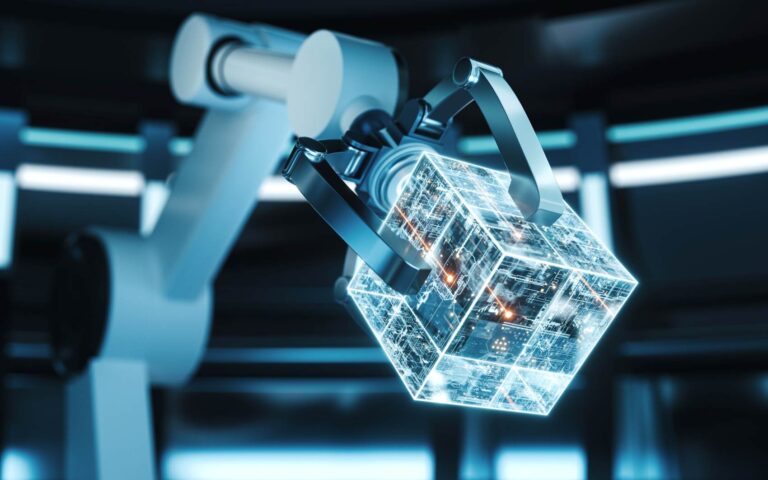The modern electrical grid is one of the biggest interconnected systems on Earth, linking vast power generation plants, renewable energy resources, and billions of grid automation and end-user devices.
Once designed for a one-way flow of electricity from large, centralised plants, today’s grid is more complex, interactive, and data intensive.
In many regions, the need to use power is growing considerably. In its Global Energy Perspectives 2024 report, McKinsey projects that global energy demand will grow by between 11-18% by 2050. Coordinating so many disparate energy resources with sudden swings in supply to ensure a balance with energy demand is a significant challenge for operators. All this creates a formidable task for operators, who must juggle sudden spikes in consumption, variable renewable energy production, and the ongoing threat of extreme weather.
Where AI fits in
A growing number of utilities are turning to AI-based tools to process vast data streams and streamline tasks once managed by manual calculation. For instance, algorithms can analyse weather patterns, historical consumption, and real-time sensor readings to make more accurate power demand and renewable energy generation forecasts. This supports more efficient balancing of supply and demand, reducing the likelihood of overloaded transformers or unexpected brownouts.
Some utilities are also exploring AI-driven alarm management, which can filter the flood of alerts triggered by a network issue. Instead of operators sifting through hundreds of notifications, AI tools can be used to identify and highlight the most critical issues in real time. Another AI application is with congestion management, detecting trouble spots on the grid where demand might exceed capacity and even propose rerouting strategies to keep electricity flowing reliably. While still in their early stages, AI tools hold promise for driving operational efficiency in many daily scenarios.
The enduring need for human expertise
Even the smartest algorithm, however, lacks the broader perspective and accountability that people bring to grid management. Power and Utility companies are tasked with a public service mandate: they must ensure safety, affordability, and equitable access to electricity.
An AI tool may produce a technically-sound plan but ignore social or environmental considerations a trained human operator would recognise. That human element is a fundamental safeguard, especially when the well-being of communities can hinge on decisions made in a control room.
On-the-ground judgment
In industries where AI has become more common, like oil & gas, or manufacturing, its recommendations often are validated with veteran professionals. The same pattern applies to utilities. Algorithms can identify likely maintenance needs or suggest real-time operational changes, but it is operators who verify if these ideas align with available resources, staff schedules, or local regulations.
Beyond confirming AI proposals, people have the advantage of lived experience. They might recall how a particular substation performed during a prior storm or whether terrain makes access for repair crews more difficult than predictive models suggest.
Equally, because electricity is key to daily life, mistakes can carry serious consequences. A single error can lead to blackouts across entire regions, threatening vulnerable populations and causing economic losses.
By keeping people at the heart of decision-making, utilities introduce essential checks and balances. Human operators can review AI outputs that seem off-base, investigate potential blind spots, and pause or override automated actions that could create harm. This oversight ensures that ethical considerations remain front-and-centre, rather than leaving all decisions to software logic.
Flexible adaptation
As more forms of renewable energy come online and as electrification extends to heating, transportation, and beyond, grid operations will continue to grow in complexity. At the same time, AI is likely to expand its capabilities, analysing larger datasets and making more sophisticated recommendations.
Yet, no matter how advanced these systems become, they cannot replicate the flexibility of human thought or the responsibility that comes from hands-on accountability. When conditions change unexpectedly, such as sudden weather shifts or community needs, people can adapt on the fly, drawing on intuition and broader knowledge that an algorithm may not possess.
Looking ahead
In the future, it is likely that AI will handle more routine grid functions and help operators respond faster to fluctuations in supply and demand. It could also play a stronger role in pinpointing maintenance schedules, dispatching repair teams, and limiting congestion on transmission lines.
Ultimately, though, this technology is a powerful tool rather than a replacement for human judgment. When paired with well-trained professionals, AI can help ensure a more dependable energy future, fostering a system that balances cost-effectiveness, safety, and the need for cleaner sources of power.
By acknowledging the strengths of both AI and human expertise, utilities can better navigate the rising pressures of growing demand and the evolving energy mix. The key point to remember is that while algorithms process data at speeds no human can match, it is still people who carry the responsibility for making sound decisions.
About the Author
Sally Jacquemin is Vice President and General Manager, Power & Utilities Business Unit at AspenTech. AspenTech is a global software leader helping industries at the forefront of the world’s dual challenge meet the increasing demand for resources from a rapidly growing population in a profitable and sustainable manner. AspenTech solutions address complex environments where it is critical to optimize the asset design, operation and maintenance lifecycle. Through our unique combination of deep domain expertise and innovation, customers in asset-intensive industries can run their assets safer, greener, longer and faster to improve their operational excellence. To learn more, visit AspenTech.com.


